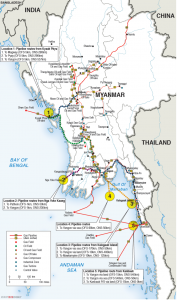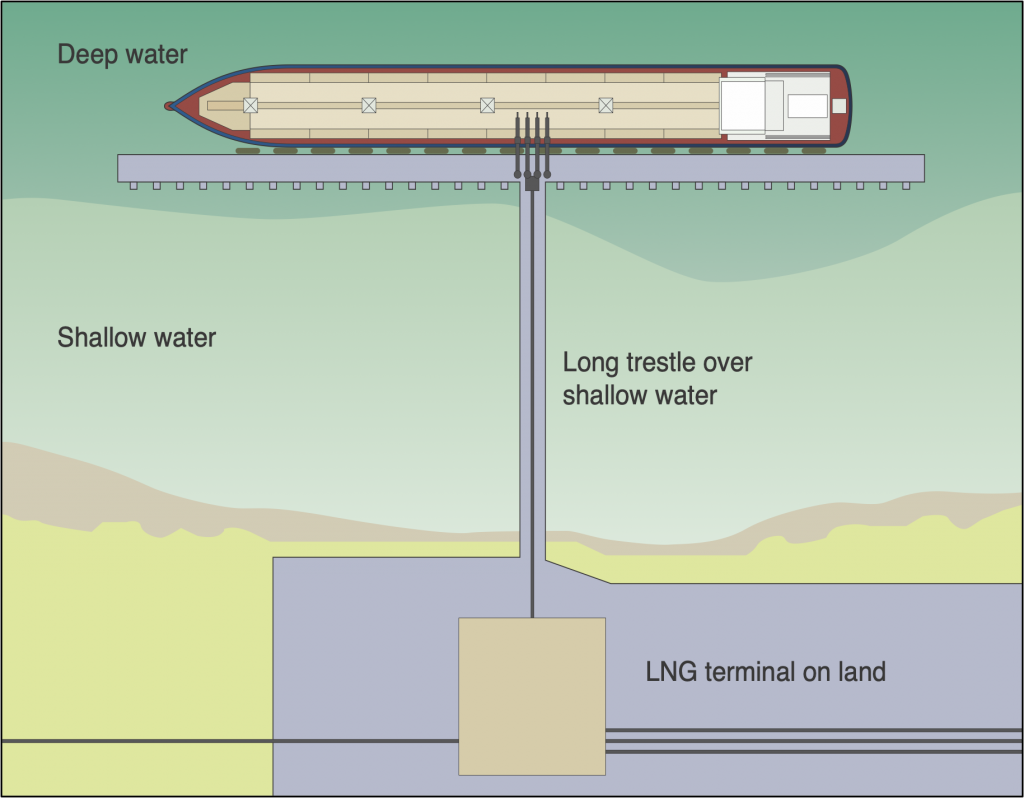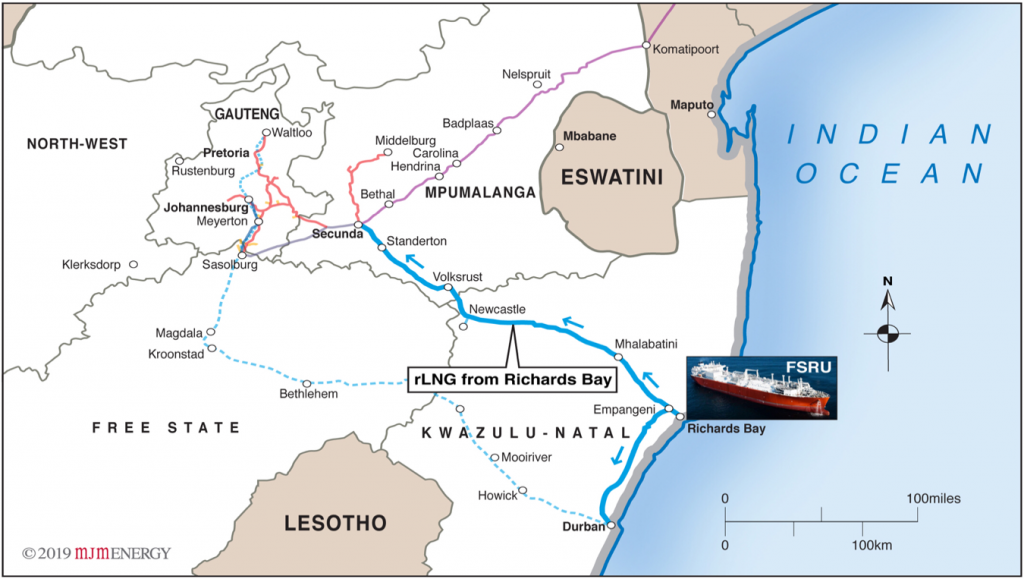- An assessment of LNG liquefaction, regasification and shipping technologies.
- LNG import terminal siting studies.
- LNG import infrastructure feasibility studies, exploring different options and technologies.
- LNG purchase contract strategies and negotiations.
Case Studies
Background
In Myanmar, only 65-70% of the population have access to electricity, with consumption per capita around 160 kWh per annum, which is one of the lowest in the world. While Myanmar is seeking to meet this growing demand for electricity by developing gas-fired power generation, its plans have been hindered by constraints in indigenous gas production, resulting in a supply/demand deficit. To help Myanmar manage this supply / demand deficit, the World Bank contracted with MJMEnergy Limited (an international consulting firm) to assist the Government of Myanmar in developing a gas sector development plan. This work included the MJMEnergy Project Team being required to explore a number of potential LNG import options to meet the growing demand for gas in Myanmar. Therefore, MJMEnergy developed a bespoke Project Team, led by Mike Madden, consisting of international technical and commercial LNG experts, pipeline engineers, metocean analysts and economists to provide a detailed technical and commercial analysis of five LNG import locations, together with an analysis of the technical and commercial options for LNG imports.
Brief overview of the project
MJMEnergy provided detailed siting analysis for five the potential locations for LNG import facilities in Myanmar via an FSRU, covering the following;

Technical studies – Work undertaken included; Metocean, marine and port facility studies; The identification and costing of different LNG import facilities using different FSRU technical and commercial solutions; and an analysis of existing onshore pipeline capacity, together with estimated costs of any new infrastructure.
Commercial studies – This included; A review of previous studies, including the supply/demand match; and an analysis of different commercial LNG supply options from long-term LNG contracts, through to spot purchases and swap gas options.
Project implementation
The Project Team also produced extensive project timelines highlighting material lead-times, design, construction and commissioning times. Capacity building – In addition to this siting analysis, MJMEnergy developed a prioritisation tool for LNG import options and locations to support decision making by the various stakeholders in Myanmar exploring these options.
Background
The GoV (Government of Vietnam), has a growing commitment to phasing out the use of coal and replacing it with gas and renewables in its next Master Plan for Power Development (PDP). The Ministry of Industry and Trade (MOIT), who has policy responsibility for the introduction of LNG into Vietnam, has undertaken a number of studies on the technical, commercial and regulatory issues involved in the development of LNG-to-power projects. In addition, with renewable energy also expanding, new LNG power plants will also need to make a contribution to system stability.
Brief overview of the project
In the light of the above MJMEnergy were requested by the World Bank to provide technical and commercial support to a local client in Vietnam who wished to develop an LNG-to-Power project, with the focus of the support on the LNG chain. Therefore over a period of a year the MJMEnergy Project Team provided technical and commercial support to the client in the following areas.
- General commercial support – To provide the client with commercial advice on developing an LNG-to-power investment, drawing on experience of similar projects in other countries.
- Project structure – The development of both the commercial structure and associated financing for the project.
- Technical support – To provide technical assistance to the client by assisting them in preparing preliminary design options, estimating their costs, which covered the following areas.
- Gas demand analysis.
- Various FSRU supply options.
- Various FSU options.
- Land-based terminals
As highlighted above this included exploring a number of different technical configurations of FSRU’s (as shown below), FSUs and land-based LNG terminals.

Project implementation
In order to undertake the above technical and commercial studies MJMEnergy assembled an internal team that combined the experience and knowledge of international technical, commercial and regulatory specialists. At the time of writing this review (July 2021), the analysis was on-going.
Background
- A growing supply/demand deficit.
- Capacity constraints for pipelines supplying industrial consumers.
- The need to prioritise constrained gas supplies amongst different provinces.
Brief overview of the FSRU aspect of the project

The regulatory implications of the FSRU – In addition to identifying the need for the LNG import terminal capacity the Project Team also explored the regulatory implications of the terminal. This work included an overview of the existing regulatory regime exploring how the existing framework would influence the tariff associated with using the LNG import terminal.
FSRU tariff methodology – In addition, this work also explored the different approaches to FSRU service tariffs that might be used by a terminal allocation
Key conclusions in relation to this work
- While technical and commercial aspects would dictate that the LNG import terminal would be best located in one particular location, by using existing infrastructure and demand. Other political and economic factors favoured a second location.
- A key success factor in the development of the project would the successful signing up of a large base load User.
- Even though it was quite early on in the project timeline engagement with the regulator will be important.